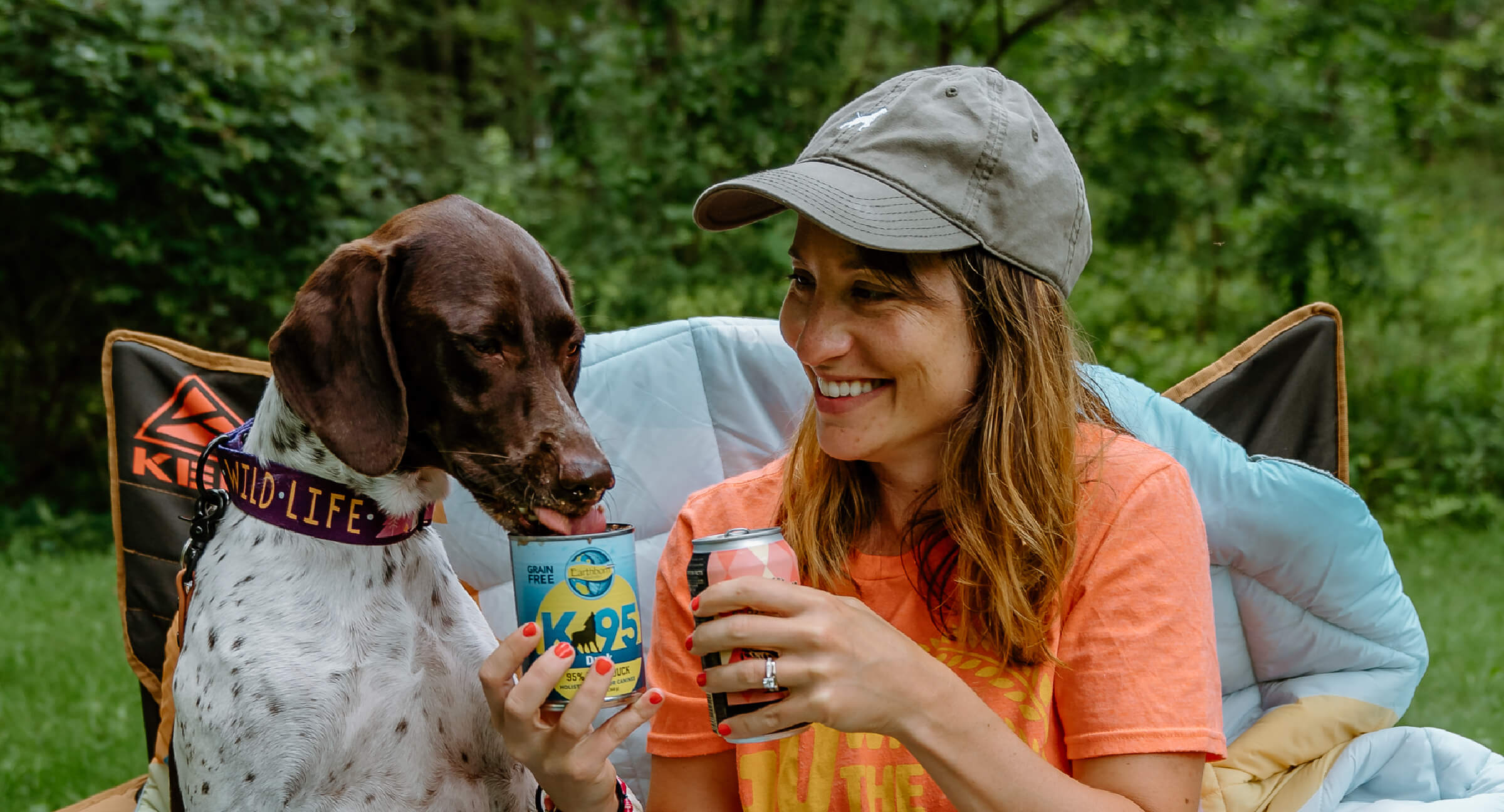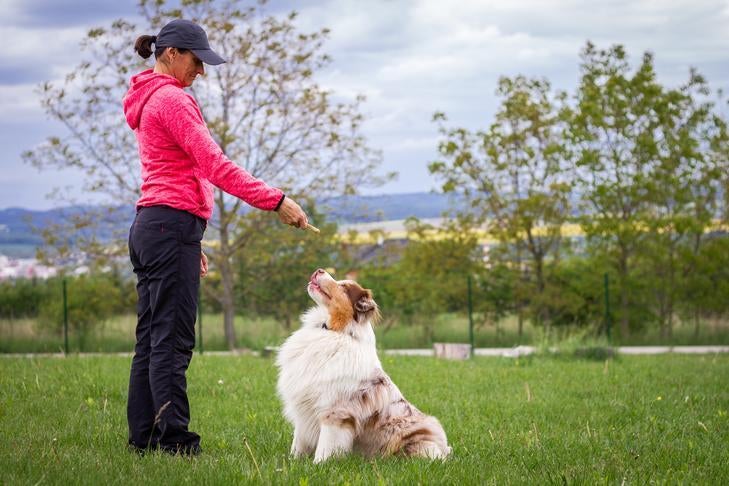Important Strategies for Efficient Dog Training You Need to Know
Important Strategies for Efficient Dog Training You Need to Know
Blog Article
Vital Tips for Effective Dog Training: An Overview for Family Pet Owners
Effective pet dog training is a multifaceted process that calls for a calculated method tailored to both the animal's personality and the proprietor's goals. Understanding just how to browse these barriers can substantially improve the training experience, inevitably changing the partnership in between owner and pet dog.
Recognizing Dog Habits
Recognizing pet dog actions is necessary for reliable training and fostering a harmonious partnership between pooches and their owners. Pets communicate primarily with body language, vocalizations, and actions, making it important for proprietors to translate these signals properly. Identifying a dog's posture, tail position, and ear orientation can supply understandings right into its psychological state. A wagging tail does not constantly indicate happiness; it can additionally signify excitement or stress and anxiety.

Socialization plays a substantial role in pet habits; direct exposure to various environments, people, and other animals can substantially impact a pet's personality. Elements such as breed attributes and specific temperament ought to lead training methods, as some types might have certain behavior qualities that demand customized approaches. By recognizing these elements, owners can produce a supportive environment that encourages positive habits, bring about successful training results and a much deeper bond with their animals.
Establishing Consistent Commands
Reliable interaction with your pet starts with establishing regular commands. This foundational element of training is essential for cultivating understanding in between you and your animal. Consistency in the commands you utilize guarantees that your pet dog can accurately link particular words or phrases with the wanted behaviors.
When choosing commands, pick clear, unique words that are simple to set apart and claim from each other. Stay clear of utilizing similar-sounding commands that may puzzle your canine. Using "rest" and "remain" is appropriate, yet "sit" and "hit" can lead to misconceptions.
In addition, maintain the same tone and quantity for every command. Pets are delicate to vocal cues, so differing your tone can produce complication.
It is just as important to guarantee that all member of the family get on the exact same web page pertaining to the commands used. A united front in command usage will avoid mixed signals and reinforce the learning procedure.
Positive Support Strategies
The power of favorable reinforcement in canine training hinges on its capacity to motivate wanted actions through incentives and appreciation. This strategy is based in the concept that actions followed by desirable outcomes are extra likely to be duplicated. By integrating favorable reinforcement into your training regimen, you can properly form your canine's actions in a useful fashion.
To execute favorable reinforcement, it's vital to recognize what motivates your pet dog, whether it be treats, toys, or spoken praise. When your pet dog performs a preferred activity, such as resting on command, instantly reward them with a treat or love. This organization in between the command and the positive end result strengthens their understanding.
It's critical to timing the benefits appropriately; delivering the support within secs of the desired habits aids your dog make the connection (dog training). In addition, uniformity is essential-- make sure that all household members utilize the very same commands and benefit systems to stay clear of complication

Gradually, you can minimize the regularity of deals with as your pet learns the habits, transitioning to applaud or recurring incentives. This approach not only fosters a strong bond between you and your canine however additionally advertises a favorable learning environment, making training a pleasurable experience for both.
Socialization and Interaction
Constantly revealing your pet to a selection of settings, individuals, and various other pets is crucial for their social development. Socialization ought to begin early, ideally during the essential window of 3 to 14 weeks, when young puppies are most receptive to new experiences. However, older dogs can also benefit from recurring socializing initiatives.
Introduce your dog to various setups, such as parks, pet-friendly shops, and metropolitan areas. This direct exposure helps them adapt to numerous stimuli, reducing anxiety and anxiety feedbacks. Encourage favorable communications with other canines and people, ensuring that these experiences are risk-free and controlled to foster self-confidence.
Use structured playdates with genteel pet dogs, as this can enhance your pet dog's social skills and show them suitable actions. Obedience classes and training sessions additionally offer excellent chances for socialization, enabling your dog to engage with others check it out in a monitored atmosphere.
Display your canine's body movement during interactions, as this will certainly help you assess their comfort level. Progressively increase exposure to more tough situations while making certain that each experience is positive. A well-socialized pet dog is more probable to display well balanced behavior, making them a delight to have in any kind of setup.
Dealing With Typical Training Obstacles
Every dog owner will certainly run into training obstacles at some factor, regardless of their canine's age or socializing degree. Recognizing common issues such as stubbornness, diversions, and terror can aid in developing effective techniques for enhancement.

Distractions throughout training sessions can thwart emphasis. To battle this, begin training in a silent setting with marginal stimulations. Progressively present disturbances as the pet comes to be extra proficient in commands. Short, constant training sessions are additionally reliable in keeping interest.
Terror can prevent a pet dog's knowing process. Gradual desensitization to the resource of concern, coupled with positive support, can assist reduce anxiety. Perseverance is critical; never force a pet into a situation that creates distress, as this might intensify the issue.
Inevitably, understanding and attending to these common obstacles with a structured approach will certainly foster an extra efficient training experience, reinforcing the bond between dog and proprietor while promoting reliable knowing.
Verdict
In summary, effective canine training counts on a detailed understanding of canine behavior, the facility of regular commands, and the application of positive support techniques. Socializing plays an important duty in establishing well-adjusted pet dogs, best site while dealing with usual training challenges calls for perseverance and flexibility. By executing these crucial approaches, animal proprietors can cultivate a solid bond with their pet dogs and advertise preferable actions, eventually leading to an unified relationship between people and their canine buddies.
Recognizing dog behavior is necessary for effective training and cultivating an unified connection in between pooches and their proprietors.Socialization plays a considerable function in pet behavior; exposure to various atmospheres, individuals, and various other pets can significantly impact a canine's character.The power of favorable support in pet training exists in its capacity to encourage desired behaviors through rewards and praise. By integrating positive reinforcement into your training regimen, you can efficiently shape your canine's habits in a useful way.
In summary, successful dog training relies view it now on a comprehensive understanding of canine behavior, the establishment of regular commands, and the application of favorable support methods.
Report this page